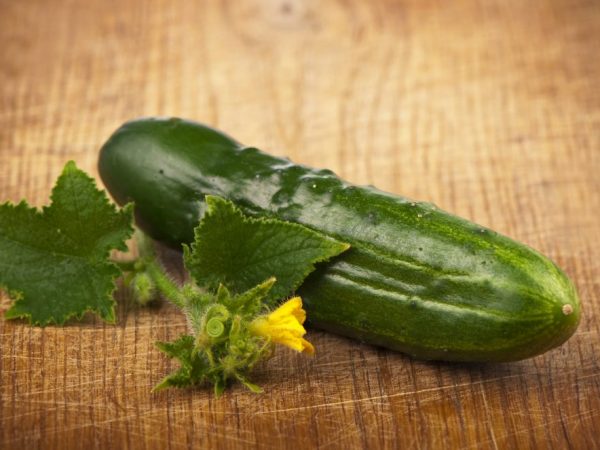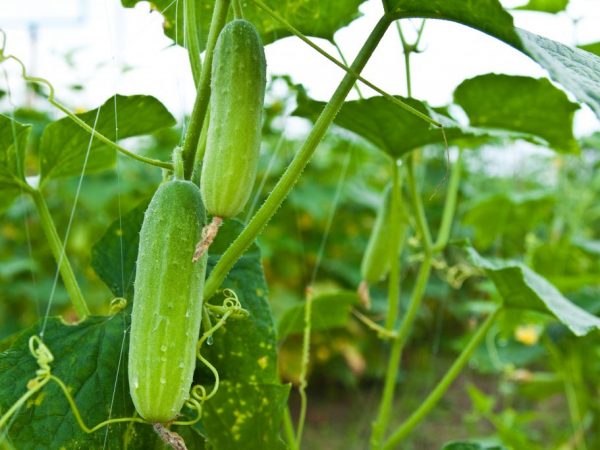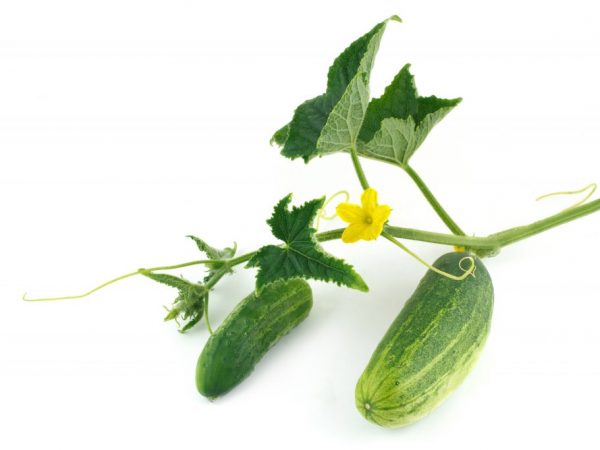Cucumber varieties for a greenhouse in the Moscow region
To get a great harvest, it is important to choose the right vegetables in your area. Knowing the climatic features of the region, it is possible to achieve the maximum return from any plant. What are the best varieties of cucumbers for a greenhouse in the Moscow region? Let's take a closer look at the varieties presented on the domestic market.

Cucumber varieties for a greenhouse in the Moscow region
Selection features
All farmers want to get a bountiful harvest, but often do not think about suitable seed material. Due to inappropriate conditions, expensive hybrids do not always justify their cost. For greenhouses near Moscow, there are three types of vegetable liana:
- winter;
- summer;
- autumn.
Selection criteria
To get a bountiful harvest in the Middle Lane, you should pay attention to the ripening rate. What blooms and forms without problems in the southern regions will not have enough time to get enough sunny days for growth in cool summer conditions. There are several groups of plants.
- Late. Delicious, aromatic fruits appear no earlier than 60 days. Despite the long growing season, they are distinguished by the maximum qualitative and quantitative return.
- Mid-season. The average waiting time for zelents ranges from forty-five to fifty days.
- Early. Harvesting begins 5.5 weeks after germination.
When choosing the best varieties of cucumbers for the Moscow region in greenhouses, you should pay attention to the design features. For unpretentious film structures, the early and middle options will be the best solution. For professional greenhouses with heating and additional lighting, planting of long-ripening hybrids is allowed.
The temperature changes from year to year, spring can be early and very warm or, conversely, cold and protracted.
Plant variants
According to the method of use, cucumbers are for pickling and for fresh consumption. Vegetables for pickles have a thin skin and a large amount of sugar in the pulp. Such specimens perfectly pass salty solution and quickly ferment. Salad products are covered with a hard skin that retains aroma and pleasant crunch. Universal options are acceptable both to salt and cut on the table.
By the way, when growing varieties for greenhouses, it is worth remembering about plant pollination. It is not always possible to "drive" insects into an indoor space, so choose hybrids that can bear fruit without the intervention of bees. If part of the site is closed by outbuildings, then look for such quality as shade tolerance on the packaging. Resistance to common diseases will make it easier to care for.
Harvest species
To get the most out of a small plantation, it is worth purchasing the prolific varieties. It is not always possible to grow a decent crop in greenhouses. Successful hybrids will fully recoup the money and effort spent on them.
Zozulya

Fruits are ideal for making salads
It is considered one of the most popular varieties of domestic breeding. If you create suitable conditions, then you can collect at least ten kilograms of delicious vegetables from one square meter. Plants have natural immunity to viral diseases, but there is no resistance to fusarium and powdery mildew.
Cucumbers of the Zozulya F1 variety are referred to as universal species, however, when preserved and stored for a long time, the fruits lose their pleasant firmness. Excellent presentation and excellent taste are used in the preparation of salads. Zelentsy grow up to 20 cm, while the weight ranges from 0.16 to 0.3 kg. The thin skin is covered with noticeable tubercles and spines.
Suzanne
If you are looking for fruitful varieties of cucumbers for greenhouses for the Moscow region, then we advise you to pay attention to this hybrid. A self-pollinated plant of Czech selection will delight farmers with neat gherkins - up to 10 cm in length. It belongs to the mid-ripening species, so the first harvest can be taken 6.5 weeks after the seeds are hatched. Despite the fact that the instructions indicate the purpose for open and closed ground, the maximum result is shown exclusively in greenhouses.
Cylindrical fruits are covered with a thin rough skin, on the surface of which small, barely noticeable tubercles are located. A versatile hybrid will be relevant both in salad and salting. Delicious, crispy greens have a pleasant rich aroma and do not taste bitter.
Pickle
Among the fruitful cucumbers for greenhouses in the Moscow Region, it is worth noting a mid-early variety that does not require insect pollination. It enters the fruiting period at 8 weeks, delighting farmers with neat gherkins. With minimal care, it is possible to get from 5 kg from one bush.
Medium resistance to fungal and viral diseases, therefore, thorough soil cultivation in a greenhouse is required before planting. Elastic greens reach 15 cm in length. Thanks to thoughtful selection work, the products are not bitter and will be relevant both in salad and in pickled form.
Early variants
Growing vegetables in a greenhouse shortens the ripening time by a couple of weeks. There are special varieties, in the genetics of which the early formation of fruits is already programmed. If you are new to farming, then we recommend planting several hybrids in the same bed.
Masha
The ultra-early variety ripens 37 days after the first shoots have appeared. The plant does not require pollinators, which makes it easy to cultivate both in the open field and in greenhouses. At a young age, the seedlings have a weak root system, therefore, preliminary processing of seed material and soil is required.
Adult cucumbers have a strong immunity to scab and other diseases. From one square meter of planting, it is possible to get over ten kilograms of gherkin-type zelents. The neat fruits are covered with a thin skin with noticeable tubercles. The fragrant crispy pulp does not taste bitter, therefore it is suitable for salad and canned food.
Emelya
An undemanding hybrid is grown both in a greenhouse and on a balcony. Unpretentious to care, it will become an ideal culture for novice gardeners. If you pre-treat the seed with a dressing agent, then it is easy to avoid problems with temperature extremes or lack of light.
A bountiful harvest does not require pollinators. Fruiting begins 40 days after hatching. The plant withstands crowded plantings, allowing four bushes to be placed on one square meter. The crispy, aromatic pulp is covered with a thin skin with small bumps.
April

This variety will delight you with an early harvest.
Early cucumbers for greenhouses in the Moscow region will delight with the harvest in six weeks. Domestic breeders tried to make the hybrid as suitable as possible for growing in indoor and outdoor conditions in the Middle Lane.Experienced farmers practice cultivation on windowsills and balconies.
A prolific hybrid does not require pollination, however, in the presence of bees, the amount of greens can be increased by 30%. If they are not picked on time, large cucumbers quickly "age", so we advise you to constantly harvest. Under the thick skin, fragrant pulp is hidden without a single splash of bitterness. They are used exclusively for preparing salads.
Suomi
If you are looking for the earliest variety of cucumbers, then take a look at the improved version for greenhouses. A strong plant will delight you with a bountiful harvest 36 days after the appearance of the first shoots. A powerful liana with a limited number of lateral lashes forms up to 6 fruits between the nodes.
The neat gherkins are covered with a tough skin, but this does not interfere with using the product not only fresh, but also pickled. Juicy, aromatic pulp has no specific bitterness. The hybrid is resistant to common species diseases and care errors.
Cold resistant options
The best varieties of cucumbers for the Moscow region for greenhouses will help protect crops from minor temperature fluctuations. However, in the climate of the Middle Belt, there is often a cold summer, which does not give the plants the opportunity to form ovaries normally. The way out will be special varieties that are resistant to cold (up to 5C).
State farm
One of the most popular and productive options in the frost resistance category. The culture will please the fruits 50 days after planting in the ground. Perfectly suited for development in greenhouses, without the need for meticulous temperature control. Slight fluctuations from the norm allow you to grow the plant in winter.
A disease-resistant hybrid requires increased attention only at the seedling stage, after which it develops without problems. Fruiting before the onset of critical conditions, therefore, if the minimum requirements are met, it pleases with green people for a very long time. It tolerates transportation and is used for salads.
Amur
The best cucumbers for a greenhouse in the Moscow region can be chosen from the "northern" varieties. The domestic hybrid is cultivated both in greenhouses and in the open field. The vigorous plant does not require pollinators and is distinguished by the simultaneous fruit setting. Due to low branching, no shaping is required.
Cold-resistant varieties can withstand non-critical temperature fluctuations. The culture is not afraid of common diseases and forgives growing mistakes. It enters the fruiting period on the 40th day, and the marketable yield is 2 kg per square meter. Zelentsy are salad types, but they are also suitable for preservation.
Valaam
Domestic breeders carry out complex hybridization work, as a result of which an early variety of vegetable liana, resistant to disease and unfavorable climatic conditions, has appeared. Thirty-eight days pass from the moment of planting to ripening. At the same time, the fruits retain their original oval shape and do not “age”.
The best cucumber seeds for a greenhouse in the Moscow region do not need preliminary processing. For the conditions of poorly equipped premises, we recommend using the seedling growing method. A powerful liana with a limited number of lateral shoots does not emit "empty" flowers and forms 5 zelents between the nodules.
Chekist
The strongest and most adapted hybrid, which will withstand not only temperatures up to 10 degrees, but will also continue to bear fruit. A plant that does not require pollination enters the yield period from 36 days after the seeds hatch. With a lack of heat, pathogens develop rapidly in the greenhouse, however, cucumber has excellent resistance to powdery mildew, spots and root rot, and an average immunity to bacteriosis.
Small greens with large tubercles are used both in salting and fresh.Tasty pulp with a typical "cucumber" aroma has no bitterness, even with mistakes in care. A strong variety will be relevant for cultivation by beginners.
According to my desire
Another plant of domestic selection that does not require insect pollination. Cold hardy and shade tolerant, it is great for greenhouse and balcony cultivation. The highlight of the variety is that after harvest, new buds are deposited between the nodules.
The culture enters the fruiting period 6 weeks after the seeds hatch. Medium greens are genetically free from bitterness, however, we recommend using the products in conservation and salting. Possesses stable immunity to all common species diseases.
A bountiful harvest is the merit of an attentive farmer. When choosing plants, it is necessary to take into account the climatic characteristics of the region. In our recommendations, you will find the best varieties of cucumbers for greenhouses in the Moscow region, which will be relevant in the 2018 season.


